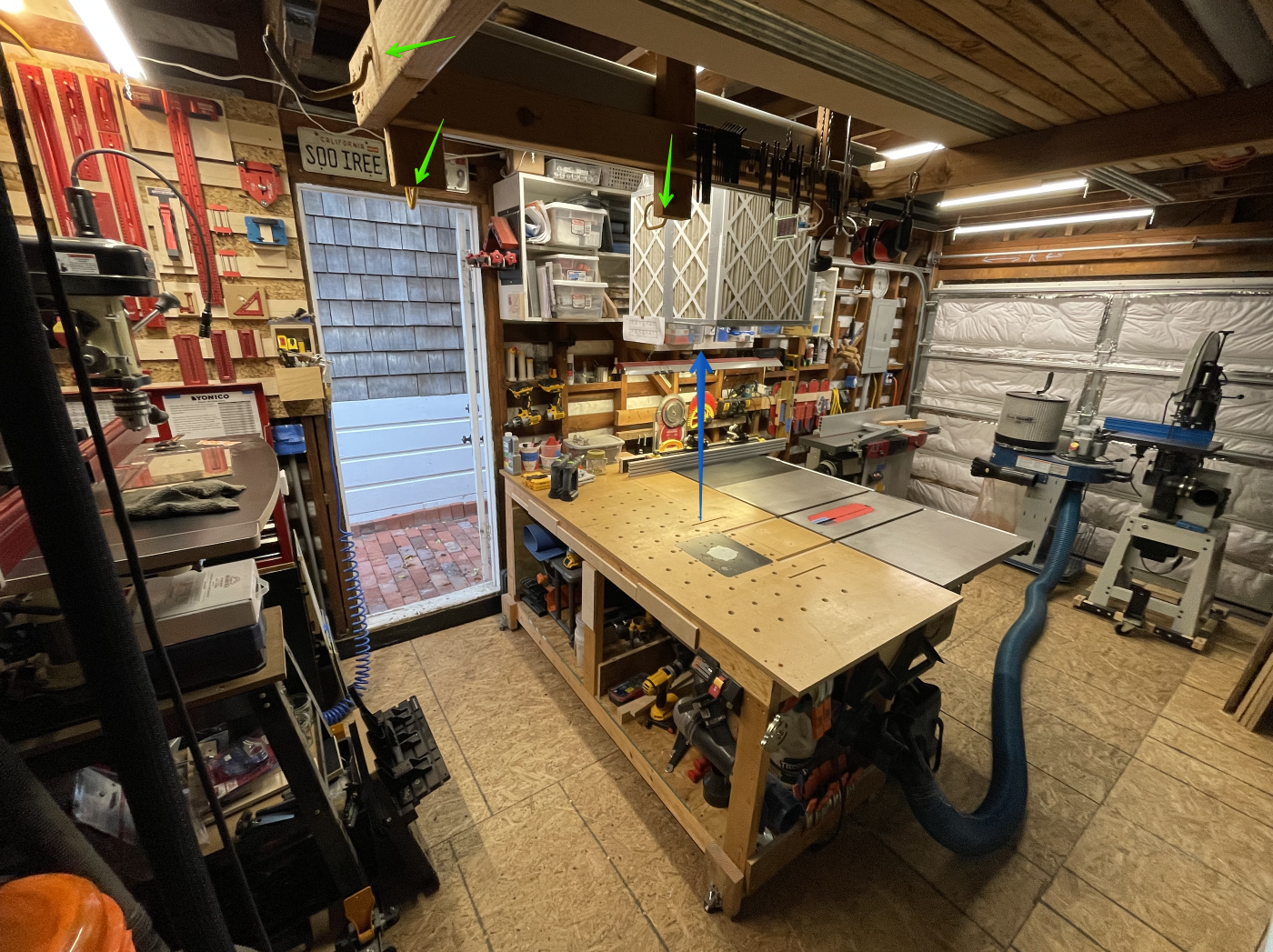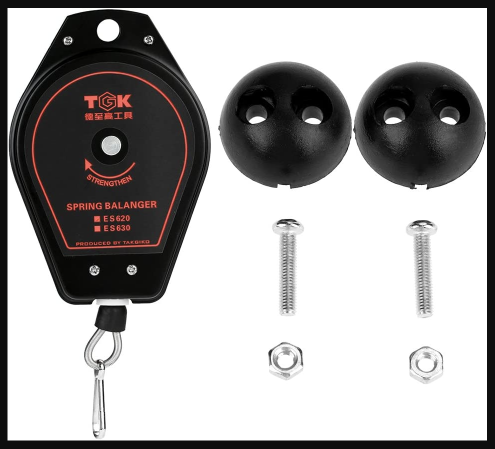4nthony
Member
I want to route my extractor hose to a single point above my workbench connected via a retractable tether. I've found quite a few options and I'm not sure how much retraction weight I should get.
I want the hose to be under some tension when sanding, etc., but not so much that I'm fighting with it. I'm seeing weights from 15 oz up to 8 lbs. I'm thinking 2 lbs might be good, maybe 5 lbs? I don't know for sure.
Any suggestions?

I don't have room for a boom arm. I currently use a simple hook and while it does the job, I'm constantly adjusting the slack.
Thanks!
I want the hose to be under some tension when sanding, etc., but not so much that I'm fighting with it. I'm seeing weights from 15 oz up to 8 lbs. I'm thinking 2 lbs might be good, maybe 5 lbs? I don't know for sure.
Any suggestions?

I don't have room for a boom arm. I currently use a simple hook and while it does the job, I'm constantly adjusting the slack.
Thanks!



